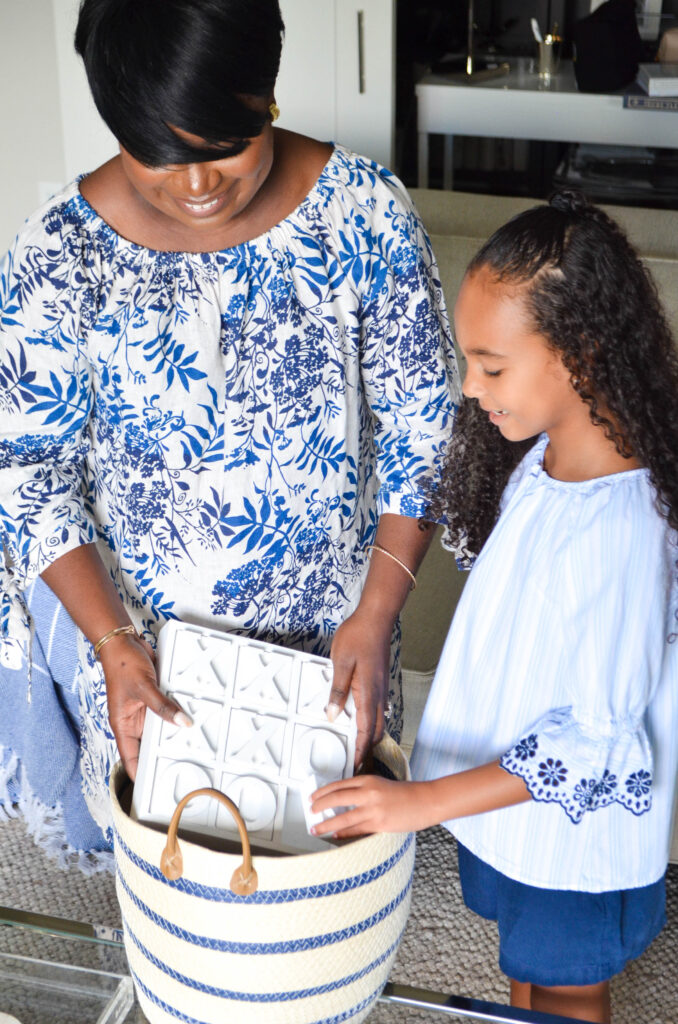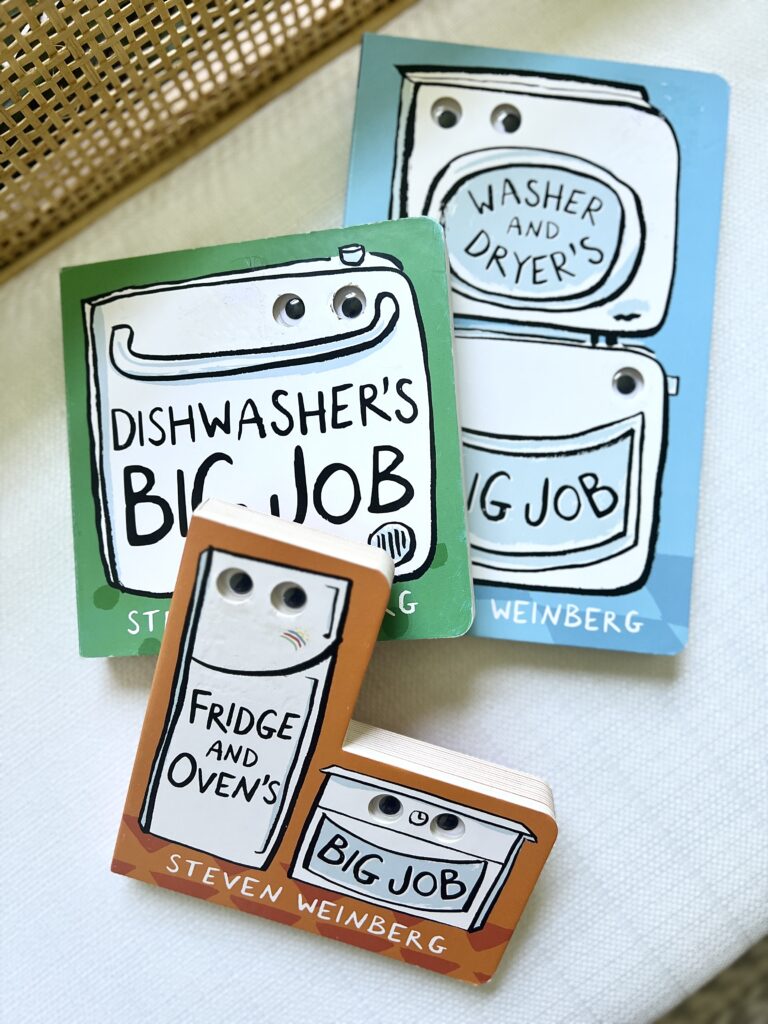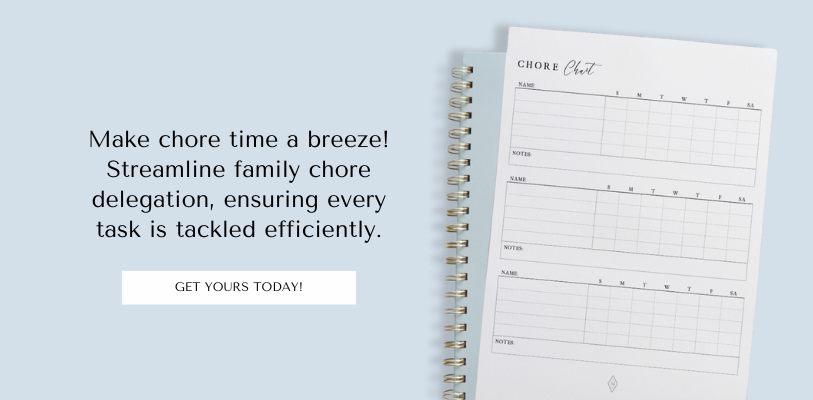Incorporating Your Kids into Home Organization: Fun and Effective Tips for a Tidy Home
Keeping a home organized can be a rewarding experience, especially when everyone in the family gets involved. Teaching kids to be organized from an early age not only lightens your load but also equips them with valuable skills for life. Here’s how you can turn home organization into a fun and educational activity for your children, making it a joyful part of your family routine.
1. Introduce Your Kids to the Art of Organization Through Books
Books are a wonderful way to introduce young children to the concepts of order and responsibility. They simplify complex ideas and present them in an engaging and enjoyable way.
Steven Weinberg’s books are wonderful for this purpose. His titles like “Dishwasher’s Big Jobs and “Washer & Dryer Big Jobs!” are perfect for young readers. These stories creatively incorporate themes of home and teamwork, providing kids with a fun, age-appropriate perspective on what it takes to maintain a home. Reading these books together can be a delightful bonding activity that also sparks conversations about keeping their spaces tidy.
2. Implement a Family Chore Chart
A family chore chart is an excellent tool to keep everyone on track and ensure that household tasks are distributed fairly. It helps children understand their responsibilities and the importance of contributing to the household. I offer a simple but efficient chore chart to fit your family’s needs. Kids often enjoy the visual satisfaction of checking off completed tasks, which can be very motivating and encouraging.
Using a chore chart promotes routine and consistency, making it easier for everyone to keep up with their duties. Get yours here.
3. Make Organization a Fun Activity
Turning organizing into a game can make the process enjoyable and engaging for kids. For younger children, you could set a timer and have a “speed clean” race to see who can pick up the most toys before the timer goes off.
For older kids, you can create an “Organizing Game” using my Beautifully Organized In Fifty-Two Weeks Card Deck. Each card offers a different organization task and tip. Draw a card and challenge your kids to complete the task, or turn it into a friendly competition to see who can finish their assigned card first. This not only makes organizing fun but also introduces them to practical and effective organizational strategies.
4. Create Designated Spaces for Their Belongings
Teaching kids to keep their belongings in specific places is crucial for maintaining order. Provide accessible bins, shelves, and storage solutions, and clearly label these spaces. When children know exactly where their toys, books, and clothes belong, they’re more likely to keep their areas tidy.
Involving them in the process of setting up these spaces can also give them a sense of ownership and make them more committed to keeping things organized.
5. Reward and Encourage Consistency
Positive reinforcement can be a powerful motivator. Consider setting up a reward system where kids can earn points or tokens for completing their chores and keeping their areas clean. These points can be exchanged for small treats or privileges, making the process rewarding and encouraging them to stay consistent.
6. Lead by Example
Children often mimic the behaviors they see in adults. By demonstrating good organizational habits, you set a positive example for your kids to follow. Show them how you organize your space, handle daily chores, and maintain order. When they see you practicing what you preach, they’re more likely to adopt similar habits.

7. Schedule Regular Clean-Up Times
Establishing regular clean-up times can help create a routine. Whether it’s a quick 10-minute tidy-up before bedtime or a more thorough cleaning session on the weekend, having a set schedule makes it easier for everyone to participate and stay on top of the mess.
8. Foster a Sense of Ownership and Responsibility
Involve your kids in decision-making about their spaces. Let them choose how to organize their room or select their storage solutions. This empowerment fosters a sense of ownership and responsibility, making them more invested in maintaining order.
9. Age-Appropriate Organizing Tasks for Kids
Teaching kids to take on organizing tasks that are suitable for their age helps build their skills gradually.
Here’s a quick guide to age-appropriate organizing tasks:
* Ages 2-4: Simple tasks like putting toys in bins, placing books on shelves, and helping set the table.
* Ages 5-7: Tidying up their room, making their bed, and sorting laundry.
* Ages 8-10: Organizing their school supplies, helping with meal prep, and folding clothes.
* Ages 11-13: Cleaning their bathroom, vacuuming, and managing their own schedules.
* Ages 14+: Taking responsibility for their own space, including deep cleaning, and assisting with larger household tasks.
For a more detailed guide on recommended age-appropriate organizing tasks, click here to get your free Kid-Appropriate Organizing Task Guide!
By incorporating these tips, you’re not only keeping your home organized but also teaching your kids valuable skills that will benefit them throughout their lives. Remember, the goal is to make the process enjoyable and to show them that a tidy space contributes to a happy and stress-free home environment.
I hope these ideas inspire you to get your kids involved in your home organization journey. For more tips, tools, and resources, be sure to visit athomewithnikki.com
Happy organizing!
Nikki


